-
Non-equilibrium transport in polymer mixed ionic–electronic conductors at ultrahigh charge densities Nat. Mater. (IF 37.2) Pub Date : 2024-07-26 Dionisius H. L. Tjhe, Xinglong Ren, Ian E. Jacobs, Gabriele D’Avino, Tarig B. E. Mustafa, Thomas G. Marsh, Lu Zhang, Yao Fu, Ahmed E. Mansour, Andreas Opitz, Yuxuan Huang, Wenjin Zhu, Ahmet Hamdi Unal, Sebastiaan Hoek, Vincent Lemaur, Claudio Quarti, Qiao He, Jin-Kyun Lee, Iain McCulloch, Martin Heeney, Norbert Koch, Clare P. Grey, David Beljonne, Simone Fratini, Henning Sirringhaus
-
Atomically precise inorganic helices with a programmable irrational twist Nat. Mater. (IF 37.2) Pub Date : 2024-07-26 Dmitri Leo Mesoza Cordova, Kenneth Chua, Tyler A. Kerr, Toshihiro Aoki, David Knez, Grigorii Skorupskii, Diana Lopez, Joseph Ziller, Dmitry A. Fishman, Maxx Q. Arguilla
-
Enhanced elastic stability of a topologically disordered crystalline metal–organic framework Nat. Mater. (IF 37.2) Pub Date : 2024-07-23 Emily G. Meekel, Phillippa Partridge, Robert A. I. Paraoan, Joshua J. B. Levinsky, Ben Slater, Claire L. Hobday, Andrew L. Goodwin
-
Sustainability pathways for perovskite photovoltaics Nat. Mater. (IF 37.2) Pub Date : 2024-07-23 Kevin J. Prince, Heather M. Mirletz, E. Ashley Gaulding, Lance M. Wheeler, Ross A. Kerner, Xiaopeng Zheng, Laura T. Schelhas, Paul Tracy, Colin A. Wolden, Joseph J. Berry, Silvana Ovaitt, Teresa M. Barnes, Joseph M. Luther
-
Fracture-driven power amplification in a hydrogel launcher Nat. Mater. (IF 37.2) Pub Date : 2024-07-23 Xin Wang, Chengfeng Pan, Neng Xia, Chong Zhang, Bo Hao, Dongdong Jin, Lin Su, Jinsheng Zhao, Carmel Majidi, Li Zhang
-
Quadrupling the depairing current density in the iron-based superconductor SmFeAsO1–xHx Nat. Mater. (IF 37.2) Pub Date : 2024-07-18 Masashi Miura, Serena Eley, Kazumasa Iida, Kota Hanzawa, Jumpei Matsumoto, Hidenori Hiramatsu, Yuki Ogimoto, Takumi Suzuki, Tomoki Kobayashi, Toshinori Ozaki, Hodaka Kurokawa, Naoto Sekiya, Ryuji Yoshida, Takeharu Kato, Tatsunori Okada, Hiroyuki Okazaki, Tetsuya Yamaki, Jens Hänisch, Satoshi Awaji, Atsutaka Maeda, Boris Maiorov, Hideo Hosono
-
Stable microbial–material combinations for therapeutic applications Nat. Mater. (IF 37.2) Pub Date : 2024-07-17
-
Van Hove annihilation and nematic instability on a kagome lattice Nat. Mater. (IF 37.2) Pub Date : 2024-07-15 Yu-Xiao Jiang, Sen Shao, Wei Xia, M. Michael Denner, Julian Ingham, Md Shafayat Hossain, Qingzheng Qiu, Xiquan Zheng, Hongyu Chen, Zi-Jia Cheng, Xian P. Yang, Byunghoon Kim, Jia-Xin Yin, Songbo Zhang, Maksim Litskevich, Qi Zhang, Tyler A. Cochran, Yingying Peng, Guoqing Chang, Yanfeng Guo, Ronny Thomale, Titus Neupert, M. Zahid Hasan
-
-
Inulin-gel-based oral immunotherapy remodels the small intestinal microbiome and suppresses food allergy Nat. Mater. (IF 37.2) Pub Date : 2024-07-08 Kai Han, Fang Xie, Olamide Animasahun, Minal Nenwani, Sho Kitamoto, Yeji Kim, May Thazin Phoo, Jin Xu, Fulei Wuchu, Kehinde Omoloja, Abhinav Achreja, Srinadh Choppara, Zhaoheng Li, Wang Gong, Young Seok Cho, Hannah Dobson, Jinsung Ahn, Xingwu Zhou, Xuehui Huang, Xinran An, Alexander Kim, Yao Xu, Qi Wu, Soo-Hong Lee, Jessica J. O’Konek, Yuying Xie, Yu Leo Lei, Nobuhiko Kamada, Deepak Nagrath, James
-
Into the attosecond era Nat. Mater. (IF 37.2) Pub Date : 2024-07-05
The generation of attosecond pulses has opened the door to probing electron dynamics at sub-atomic scales. Beyond atomic physics, this field is envisioned to also have a decisive impact on condensed-matter physics, chemistry and biology.
-
Synthetic extremophiles via species-specific formulations improve microbial therapeutics Nat. Mater. (IF 37.2) Pub Date : 2024-07-05 Miguel Jimenez, Johanna L’Heureux, Emily Kolaya, Gary W. Liu, Kyle B. Martin, Husna Ellis, Alfred Dao, Margaret Yang, Zachary Villaverde, Afeefah Khazi-Syed, Qinhao Cao, Niora Fabian, Joshua Jenkins, Nina Fitzgerald, Christina Karavasili, Benjamin Muller, James D. Byrne, Giovanni Traverso
-
Quantifying mechanical forces during vertebrate morphogenesis Nat. Mater. (IF 37.2) Pub Date : 2024-07-05 Eirini Maniou, Silvia Todros, Anna Urciuolo, Dale A. Moulding, Michael Magnussen, Ioakeim Ampartzidis, Luca Brandolino, Pietro Bellet, Monica Giomo, Piero G. Pavan, Gabriel L. Galea, Nicola Elvassore
-
Engineered matrices reveal stiffness-mediated chemoresistance in patient-derived pancreatic cancer organoids Nat. Mater. (IF 37.2) Pub Date : 2024-07-04 Bauer L. LeSavage, Daiyao Zhang, Carla Huerta-López, Aidan E. Gilchrist, Brad A. Krajina, Kasper Karlsson, Amber R. Smith, Kremena Karagyozova, Katarina C. Klett, Michelle S. Huang, Christopher Long, Gernot Kaber, Christopher M. Madl, Paul L. Bollyky, Christina Curtis, Calvin J. Kuo, Sarah C. Heilshorn
-
Boosting electromechanical response via clamping Nat. Mater. (IF 37.2) Pub Date : 2024-07-02 Jan-Chi Yang, Ying-Hao Chu
-
Lipid discovery for mRNA delivery guided by machine learning Nat. Mater. (IF 37.2) Pub Date : 2024-07-02 Roy van der Meel, Francesca Grisoni, Willem J. M. Mulder
-
Programming topological photonics Nat. Mater. (IF 37.2) Pub Date : 2024-07-02 José Capmany, Daniel Pérez-López
-
A new slant on colour changes Nat. Mater. (IF 37.2) Pub Date : 2024-07-02 Philip Ball
Although an ability to change colour has, in the natural world, long been traditionally associated with the chameleon, that reptile is by no means unusual in this regard. Other colour-changing animals include certain fish and frogs, cephalopods such as squid, and, if we include seasonal changes of fur, Arctic hares and foxes. There is no universal mechanism behind such properties — but understanding
-
Writing a magnetic whirl on multiferroics Nat. Mater. (IF 37.2) Pub Date : 2024-07-02 Masahito Mochizuki
-
Structural dynamics LEEDS the way Nat. Mater. (IF 37.2) Pub Date : 2024-07-02 Charles J. Sayers, Giulio Cerullo
-
The need for standardizing fatigue data reporting Nat. Mater. (IF 37.2) Pub Date : 2024-07-02 Zhiping Xu, Zian Zhang
-
Unfolding a death signal to treat rheumatoid arthritis Nat. Mater. (IF 37.2) Pub Date : 2024-07-02 Marcus E. Peter, Maartje M. C. Bastings
-
Quantifying short-range order using atom probe tomography Nat. Mater. (IF 37.2) Pub Date : 2024-07-02 Mengwei He, William J. Davids, Andrew J. Breen, Simon P. Ringer
-
Coherent phenomena and dynamics of lead halide perovskite nanocrystals for quantum information technologies Nat. Mater. (IF 37.2) Pub Date : 2024-07-01 Jingyi Zhu, Yuxuan Li, Xuyang Lin, Yaoyao Han, Kaifeng Wu
-
Materials descriptors for advanced water dissociation catalysts in bipolar membranes Nat. Mater. (IF 37.2) Pub Date : 2024-07-01 Sayantan Sasmal, Lihaokun Chen, Prasad V. Sarma, Olivia T. Vulpin, Casey R. Simons, Kacie M. Wells, Richard J. Spontak, Shannon W. Boettcher
-
Molecular transport enhancement in pure metallic carbon nanotube porins Nat. Mater. (IF 37.2) Pub Date : 2024-06-27 Yuhao Li, Zhongwu Li, Rahul Prasanna Misra, Chenxing Liang, Alice J. Gillen, Sidi Zhao, Jobaer Abdullah, Ted Laurence, Jeffrey A. Fagan, Narayana Aluru, Daniel Blankschtein, Aleksandr Noy
-
Improving both performance and stability of n-type organic semiconductors by vitamin C Nat. Mater. (IF 37.2) Pub Date : 2024-06-27 Liqian Yuan, Yinan Huang, Xiaosong Chen, Yixuan Gao, Xiaonan Ma, Zhongwu Wang, Yongxu Hu, Jinbo He, Cheng Han, Jing Li, Zhiyun Li, Xuefei Weng, Rong Huang, Yi Cui, Liqiang Li, Wenping Hu
-
Cell-inspired, massive electromodulation of friction via transmembrane fields across lipid bilayers Nat. Mater. (IF 37.2) Pub Date : 2024-06-24 Yu Zhang, Di Jin, Ran Tivony, Nir Kampf, Jacob Klein
-
Moiré superlattices in twisted two-dimensional halide perovskites Nat. Mater. (IF 37.2) Pub Date : 2024-06-21 Shuchen Zhang, Linrui Jin, Yuan Lu, Linghai Zhang, Jiaqi Yang, Qiuchen Zhao, Dewei Sun, Joshua J. P. Thompson, Biao Yuan, Ke Ma, Akriti, Jee Yung Park, Yoon Ho Lee, Zitang Wei, Blake P. Finkenauer, Daria D. Blach, Sarath Kumar, Hailin Peng, Arun Mannodi-Kanakkithodi, Yi Yu, Ermin Malic, Gang Lu, Letian Dou, Libai Huang
-
Damage-free dry transfer method using stress engineering for high-performance flexible two- and three-dimensional electronics Nat. Mater. (IF 37.2) Pub Date : 2024-06-21 Yoonsoo Shin, Seungki Hong, Yong Chan Hur, Chanhyuk Lim, Kyungsik Do, Ji Hoon Kim, Dae-Hyeong Kim, Sangkyu Lee
-
Heat-assisted neuromorphic computing Nat. Mater. (IF 37.2) Pub Date : 2024-06-18 Ranjan K. Patel, Shriram Ramanathan
-
Mott neurons with dual thermal dynamics for spatiotemporal computing Nat. Mater. (IF 37.2) Pub Date : 2024-06-18 Gwangmin Kim, Jae Hyun In, Younghyun Lee, Hakseung Rhee, Woojoon Park, Hanchan Song, Juseong Park, Jae Bum Jeon, Timothy D. Brown, A. Alec Talin, Suhas Kumar, Kyung Min Kim
-
Resolving length-scale-dependent transient disorder through an ultrafast phase transition Nat. Mater. (IF 37.2) Pub Date : 2024-06-13 Jack Griffiths, Ana F. Suzana, Longlong Wu, Samuel D. Marks, Vincent Esposito, Sébastien Boutet, Paul G. Evans, J. F. Mitchell, Mark P. M. Dean, David A. Keen, Ian Robinson, Simon J. L. Billinge, Emil S. Bozin
-
Computational discovery of fast interstitial oxygen conductors Nat. Mater. (IF 37.2) Pub Date : 2024-06-13 Jun Meng, Md Sariful Sheikh, Ryan Jacobs, Jian Liu, William O. Nachlas, Xiangguo Li, Dane Morgan
-
Stretchable ionic–electronic bilayer hydrogel electronics enable in situ detection of solid-state epidermal biomarkers Nat. Mater. (IF 37.2) Pub Date : 2024-06-12 Ruth Theresia Arwani, Sherwin Chong Li Tan, Archana Sundarapandi, Wei Peng Goh, Yin Liu, Fong Yew Leong, Weifeng Yang, Xin Ting Zheng, Yong Yu, Changyun Jiang, Yuan Ching Ang, Lingxuan Kong, Siew Lang Teo, Peng Chen, Xinyi Su, Hongying Li, Zhuangjian Liu, Xiaodong Chen, Le Yang, Yuxin Liu
-
MXenes with ordered triatomic-layer borate polyanion terminations Nat. Mater. (IF 37.2) Pub Date : 2024-06-07 Dongqi Li, Wenhao Zheng, Sai Manoj Gali, Kamil Sobczak, Michal Horák, Josef Polčák, Nikolaj Lopatik, Zichao Li, Jiaxu Zhang, Davood Sabaghi, Shengqiang Zhou, Paweł P. Michałowski, Ehrenfried Zschech, Eike Brunner, Mikołaj Donten, Tomáš Šikola, Mischa Bonn, Hai I. Wang, David Beljonne, Minghao Yu, Xinliang Feng
-
-
A drop in the alien ocean Nat. Mater. (IF 37.2) Pub Date : 2024-06-04 Philip Ball
The science that describes the properties of droplets, bubbles and liquid films — namely capillarity, pioneered by Pierre-Simon Laplace at the start of the nineteenth century — therefore has relevance beyond our planet. Some of the implications for extraterrestrial environments are explored by Cordier and colleagues1. At the heart of capillarity is the notion of interfacial tension: in essence, the
-
Perovskite solar cells that withstand photolysis and are stable under reverse bias Nat. Mater. (IF 37.2) Pub Date : 2024-06-04
-
Exploring interlayer space Nat. Mater. (IF 37.2) Pub Date : 2024-06-04
Stacked atomic layers that interact via van der Waals forces offer a confined interlayer space for stabilizing unconventional materials or physical states, enabling a versatile platform for engineering structural configurations and properties at the atomic level.
-
Etch A Sketch-like liquid-crystal phase patterning Nat. Mater. (IF 37.2) Pub Date : 2024-06-04 Elizabeth A. Recker, Joy Zhou, Zachariah A. Page
-
Enabling three-dimensional real-space analysis of ionic colloidal crystallization Nat. Mater. (IF 37.2) Pub Date : 2024-06-03 Shihao Zang, Adam W. Hauser, Sanjib Paul, Glen M. Hocky, Stefano Sacanna
-
Evidence for electron–hole crystals in a Mott insulator Nat. Mater. (IF 37.2) Pub Date : 2024-06-03 Zhizhan Qiu, Yixuan Han, Keian Noori, Zhaolong Chen, Mikhail Kashchenko, Li Lin, Thomas Olsen, Jing Li, Hanyan Fang, Pin Lyu, Mykola Telychko, Xingyu Gu, Shaffique Adam, Su Ying Quek, Aleksandr Rodin, A. H. Castro Neto, Kostya S. Novoselov, Jiong Lu
-
Elucidating chirality transfer in liquid crystals of viruses Nat. Mater. (IF 37.2) Pub Date : 2024-05-23 Eric Grelet, Maxime M. C. Tortora
-
Clamping enables enhanced electromechanical responses in antiferroelectric thin films Nat. Mater. (IF 37.2) Pub Date : 2024-05-23 Hao Pan, Menglin Zhu, Ella Banyas, Louis Alaerts, Megha Acharya, Hongrui Zhang, Jiyeob Kim, Xianzhe Chen, Xiaoxi Huang, Michael Xu, Isaac Harris, Zishen Tian, Francesco Ricci, Brendan Hanrahan, Jonathan E. Spanier, Geoffroy Hautier, James M. LeBeau, Jeffrey B. Neaton, Lane W. Martin
-
A programmable topological photonic chip Nat. Mater. (IF 37.2) Pub Date : 2024-05-22 Tianxiang Dai, Anqi Ma, Jun Mao, Yutian Ao, Xinyu Jia, Yun Zheng, Chonghao Zhai, Yan Yang, Zhihua Li, Bo Tang, Jun Luo, Baile Zhang, Xiaoyong Hu, Qihuang Gong, Jianwei Wang
-
Correlated electron–nuclear dynamics of photoinduced water dissociation on rutile TiO2 Nat. Mater. (IF 37.2) Pub Date : 2024-05-22 Peiwei You, Daqiang Chen, Xinbao Liu, Cui Zhang, Annabella Selloni, Sheng Meng
-
Metal bond strength regulation enables large-scale synthesis of intermetallic nanocrystals for practical fuel cells Nat. Mater. (IF 37.2) Pub Date : 2024-05-20 Jiashun Liang, Yangyang Wan, Houfu Lv, Xuan Liu, Fan Lv, Shenzhou Li, Jia Xu, Zhi Deng, Junyi Liu, Siyang Zhang, Yingjun Sun, Mingchuan Luo, Gang Lu, Jiantao Han, Guoxiong Wang, Yunhui Huang, Shaojun Guo, Qing Li
-
A quantum coherent spin in hexagonal boron nitride at ambient conditions Nat. Mater. (IF 37.2) Pub Date : 2024-05-20 Hannah L. Stern, Carmem M. Gilardoni, Qiushi Gu, Simone Eizagirre Barker, Oliver F. J. Powell, Xiaoxi Deng, Stephanie A. Fraser, Louis Follet, Chi Li, Andrew J. Ramsay, Hark Hoe Tan, Igor Aharonovich, Mete Atatüre
-
-
Sweet-spot operation of a germanium hole spin qubit with highly anisotropic noise sensitivity Nat. Mater. (IF 37.2) Pub Date : 2024-05-17 N. W. Hendrickx, L. Massai, M. Mergenthaler, F. J. Schupp, S. Paredes, S. W. Bedell, G. Salis, A. Fuhrer
-
Exciton polaron formation and hot-carrier relaxation in rigid Dion–Jacobson-type two-dimensional perovskites Nat. Mater. (IF 37.2) Pub Date : 2024-05-16 Somnath Biswas, Ruyan Zhao, Fatimah Alowa, Marios Zacharias, Sahar Sharifzadeh, David F. Coker, Dwight S. Seferos, Gregory D. Scholes
-
Sensitive proton-radiation detectors Nat. Mater. (IF 37.2) Pub Date : 2024-05-13 Matthew C. Beard
Halide perovskite nanocrystal scintillators detect high-energy protons with sensitivity suitable for clinical applications.
-
Phase segregation and nanoconfined fluid O2 in a lithium-rich oxide cathode Nat. Mater. (IF 37.2) Pub Date : 2024-05-13 Kit McColl, Samuel W. Coles, Pezhman Zarabadi-Poor, Benjamin J. Morgan, M. Saiful Islam
-
Accelerating ionizable lipid discovery for mRNA delivery using machine learning and combinatorial chemistry Nat. Mater. (IF 37.2) Pub Date : 2024-05-13 Bowen Li, Idris O. Raji, Akiva G. R. Gordon, Lizhuang Sun, Theresa M. Raimondo, Favour A. Oladimeji, Allen Y. Jiang, Andrew Varley, Robert S. Langer, Daniel G. Anderson
-
Exceptional electronic transport and quantum oscillations in thin bismuth crystals grown inside van der Waals materials Nat. Mater. (IF 37.2) Pub Date : 2024-05-13 Laisi Chen, Amy X. Wu, Naol Tulu, Joshua Wang, Adrian Juanson, Kenji Watanabe, Takashi Taniguchi, Michael T. Pettes, Marshall A. Campbell, Mingjie Xu, Chaitanya A. Gadre, Yinong Zhou, Hangman Chen, Penghui Cao, Luis A. Jauregui, Ruqian Wu, Xiaoqing Pan, Javier D. Sanchez-Yamagishi
-
Electric-field-induced multiferroic topological solitons Nat. Mater. (IF 37.2) Pub Date : 2024-05-06 Arthur Chaudron, Zixin Li, Aurore Finco, Pavel Marton, Pauline Dufour, Amr Abdelsamie, Johanna Fischer, Sophie Collin, Brahim Dkhil, Jirka Hlinka, Vincent Jacques, Jean-Yves Chauleau, Michel Viret, Karim Bouzehouane, Stéphane Fusil, Vincent Garcia
-
-
The shape of things Nat. Mater. (IF 37.2) Pub Date : 2024-05-03 Philip Ball
While the possibilities seem as broad as our imaginations, putting microscopic self-assembly to practical use demands a consideration of the timescales needed. To take one example, the rate of assembly will determine the speed of computation that is possible from algorithmic self-assembly of DNA ‘tiles’4. And the kinetics of self-assembly and disassembly of actin filaments are central to the speed
-
Turning powders into fibre via cellulose Nat. Mater. (IF 37.2) Pub Date : 2024-05-03 Xizheng Wang, Liangbing Hu









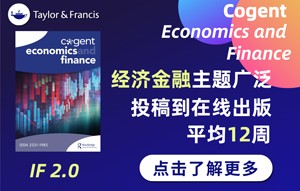
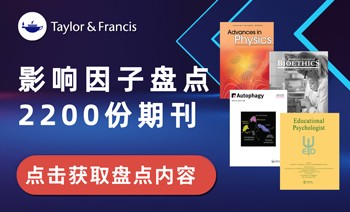
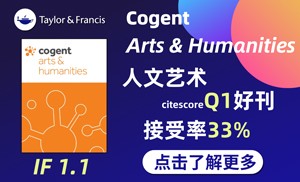
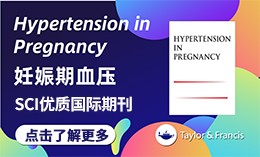




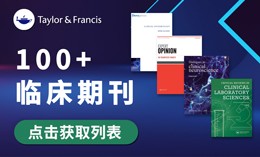














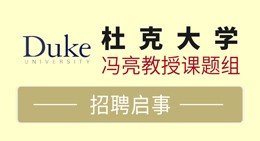
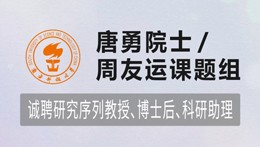
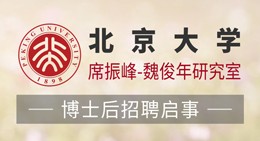



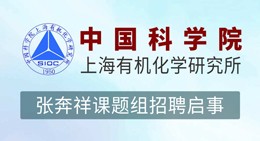
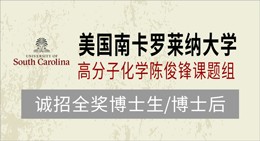
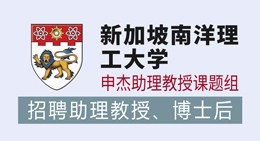



 京公网安备 11010802027423号
京公网安备 11010802027423号